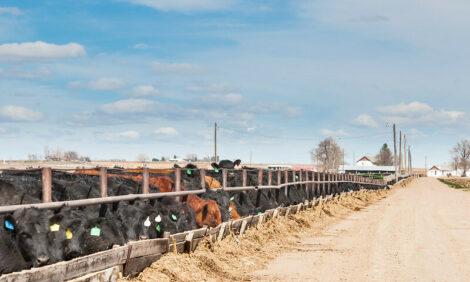



Respond to Poor Spring Temperatures With Appropriate Fertiliser Plan
UK - The abnormally low soil temperatures earlier in the year have not only affected grass growth, but have also led to a poorer than anticipated response to nitrogen (N), making it essential to for farmers to review their nutrient management plans, according to the latest advice from EBLEX.Generally, for every kilogram of N applied to grass, between 12 and 15 kilograms of dry matter (DM) is grown, which means that N can be an inexpensive way of growing winter feed.
However, there are a number of factors that reduce this response rate, including a high proportion of weed grasses, or a lack of nutrients such as phosphate (P), potash (K) or sulphur (S). Factors that increase the response rate are warm soils, perfect moisture levels and productive grasses, particularly ryegrasses.
For silage or hay ground, it is useful to plan applications to ensure no more than 2.5 kilograms of N per hectare is provided for each day between shutting the field up and cutting. This should also take into consideration any muck applied or residual N. If more is applied, the ability of the grass to take it all up is reduced and there may be problems with fermentation.
In relation to planning P and K applications, the most important thing to consider is off takes. Every fresh weight tonne of 30 per cent DM silage removed from a field takes off 2.1 kilograms of P and 7.2 kilograms of K.
For hay at 86 per cent DM, every fresh weight tonne takes off 5.9 kilograms of P and 18 kilograms of K. If this isn’t replaced, indexes will drop. This means that if first cut silage yields are lower than anticipated, planned applications may need to be reduced to avoid over-supply.
Muck and slurry is very useful at replacing these nutrients in a cutting system, for example book values for cattle farmyard manure (FYM) suggest one tonne contains 1.9 kilograms of available P and 7.2 kilograms of available K.
The most crucial factors in applying muck and slurry to silage ground are timing and the need to avoid contamination of the crop and high ammonia levels. No FYM should be applied within at least eight weeks of the planned cutting date. Well diluted slurry should only be applied more than six weeks before cutting.
Sulphur levels are also a consideration for farmers this year, as the high amount of rain is likely to have leached it out of the soil. Highest risk fields are ones that have light soil, receive no manures or slurries and are cut multiple times.
Generally, most areas that are cut for a second time are likely to benefit from 40 kilograms of sulphur trioxide per hectare, however this year deficiencies may be seen in the first cut. A grass sample needs to be taken to test for deficiency; a concentration of less than 0.25 per cent S, or an N to S ratio greater than 13:1 in the grass DM indicates deficiency.
| TheCattleSite News Desk | Read more EBLEX News here |


